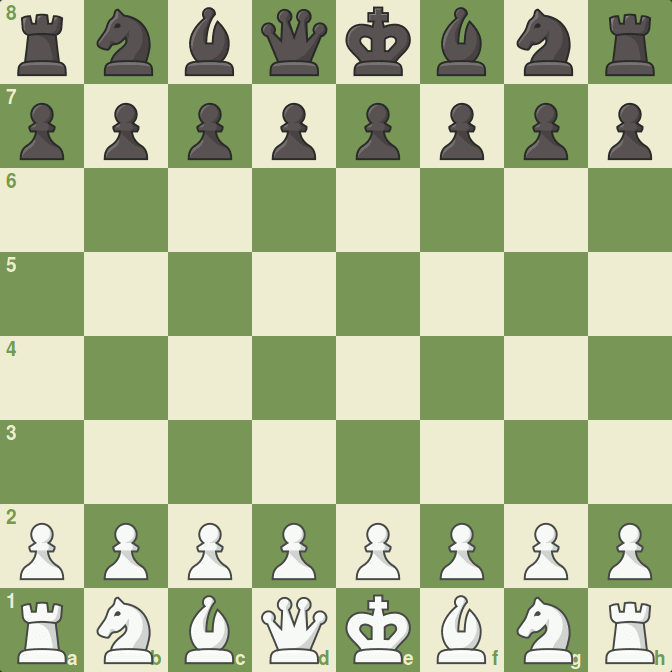Fool's Mate
Have you ever wanted to win a chess game in just two moves? One quick way to win you should know is a checkmate called Fool's Mate. Because it's the fastest checkmate in chess, every player needs to understand the following:
- What Is Fool's Mate?
- How To Deliver Fool's Mate
- How To Defend Against Fool's Mate
- Show Off Your Mating Skills
- Conclusion
- Fool's Mate Video
What Is Fool’s Mate?
To win with Fool’s Mate, you need to know what it is and why it works. Fool’s Mate is a pattern that happens early in a game. If the enemy king has no place to hide or a piece to protect it, you quickly attack it to deliver a checkmate before your opponent realizes their mistake in creating such a weak position.
Fool’s Mate can be a possibility in a game because your opponent’s f-pawn is weak. At the start of a game, this pawn is protected by only the king. The quickest checkmates often concentrate on the square where the f-pawn is located. Do you know how the squares on a chessboard are labeled? If not, learn more about how to record a chess game.
_42b3a.png)
Although some pawns can be strong, be aware of the weakness of the f-pawn.
Fool’s Mate wins a game in just two moves for Black (for White, it takes three moves). Why is it called Fool’s Mate? Your opponent has to play poorly from the beginning of a game. For you to win, your opponent has to contribute by making two pawn moves that expose their king.
How To Deliver Fool’s Mate
Before you anticipate winning with Fool’s Mate, realize that it is one of the most well-known patterns in chess. Almost all players except true beginners avoid making the two pawn moves required to expose their king that permits Fool’s Mate to happen. But for the moment, let’s just consider how to deliver Fool’s Mate.
Your initial move is to move your king pawn so that you can move your queen next. Because the queen is blocked in at the beginning of a game by a line of pawns, it cannot move until a pawn moves forward to open a way out for the queen.

Study how to deliver Fool's Mate.
For your second move, slide the queen along the just-opened diagonal to the h-file to attack the enemy king. If your opponent has left the king exposed, you can win the game by attacking it immediately with your queen: 2...Qh4#. Because your opponent cannot block the check with another piece, move the king, or capture the queen, the game is over — what a fast checkmate!
In chess notation, here are all the moves of Fool’s Mate:
- f3 e5
- g4 Qh4#

How To Defend Against Fool's Mate
Defending against Fool’s Mate is easy even for a beginning player. Keep in mind that to lose in a Fool’s Mate, you have to contribute to your opponent’s attack by playing poorly and letting your king be attacked. Make sure you can capture the piece checking your king, you can place a piece between the king and the attacking piece, or you can move your king to safety.
Remember how weak the f-pawn is because only the king protects it. Make sure that you don’t let your opponent combine an attack on the square where the f-pawn is located without adequately protecting it.

Have you seen anyone successful in delivering Fool's Mate in a tournament?
Show Off Your Mating Skills!
To be in a position to deliver Fool’s Mate, remember to move your king pawn first so your queen can move diagonally. If you think your opponent is not familiar with Fool’s Mate and they make the pawn moves that expose the enemy king, don’t hesitate to deliver a crushing checkmate. When you have won the game, be kind and explain what Fool’s Mate is to your opponent. When your opponents and friends play better, your game will improve too.
Try your mating skills with this example.
In addition to Fool’s Mate, you should also know about another quick and popular checkmate. Known as Scholar’s Mate, it takes four moves to execute. Check out our explanation about this surprising four-move checkmate.
Conclusion
Fool’s Mate is a pattern that every chess player needs to know — both to deliver as well as to protect against. Now that you know what Fool’s Mate is and how to deliver it, make sure that you are ready to win when you see the pattern develop — but also avoid being checkmated in a Fool’s Mate.